Fact check: Does ICE have higher detention standards than prisons in US?

Democratic members of Congress who saw Florida’s new immigration detention centre, Alligator Alcatraz, said they witnessed dozens of people in metal enclosures, bugs and mosquitos in bunk areas, indoor temperatures above 80 degrees and people screaming for help. Republicans who also toured the facility tell a different story, describing the space as safe, clean and well-run. The federal Homeland Security Department, which oversees immigration detention, has called characterisations of inadequate conditions at the state-run Alligator Alcatraz “false”. Homeland Secretary Kristi Noem was asked about Democrats’ accounts during a July 13 interview on NBC’s “Meet the Press”. She said the Florida-run facility is “held to the highest levels of what the federal government requires for detention facilities”. “Our detention centres at the federal level are held to a higher standard than most local or state centres and even federal prisons,” Noem said. “The standards are extremely high.” White House border tsar Tom Homan also touted the nation’s immigration detention standards as being a cut above those for prisons and jails. When a reporter asked Homan about a 75-year-old Cuban man who had been living in the US for 60 years before he died in detention in Miami in June, Homan defended federal facilities. “People die in ICE [Immigration and Customs Enforcement] custody,” he said, before saying ICE has “the highest detention standards in the industry. I’ll compare an ICE detention facility against any state prison against any federal facility. I’ll go head-to-head with any of them. … People say, ‘The detention centres are horrendous.’ Go look for yourself then come back and talk to me.” Advertisement Isidro Perez was the 11th person to die in ICE custody, almost six months into Trump’s second term. Twelve people died during former President Joe Biden’s last fiscal year in office. ICE detention centres have standards akin to prisons. But it’s difficult to assess blanket statements about the standards of immigration detention compared with state, local or other federal facilities for a few reasons. ICE detention standards aren’t codified into law, so it’s difficult to enforce them. Different ICE detention centres are upheld to different standards based on the terms of their individual contracts. There isn’t one set of standards for local, state and federal prisons and jails. Some standards are mandatory or codified into law, others aren’t. Several government watchdog agencies, advocacy organisations and news reports have long documented inadequate conditions at immigration detention centres. In May, human rights group Amnesty International reported “physical abuse by guards, use of solitary confinement, unsanitary and overcrowded living spaces including dysfunctional toilets, inadequate medical care and poor-quality, expired food” at an El Paso detention centre. Lauren Brinkley-Rubinstein, a Duke University associate professor who studies the health impacts of the criminal legal system, called Homan’s statement “very misleading”. “In most respects, ICE facilities operate with less consistent oversight and legal accountability than state or federal prisons or local jails,” Brinkley-Rubinstein said. “ICE detention facilities and people that run them tend to be much less transparent about their operations.” ICE has detention standards, but they aren’t set in law or universally applied Several federal agencies and private companies run immigration detention facilities. ICE, the main agency tasked with immigration detention, has standards that all its detention centres are supposed to abide by. For example, facilities have to be sanitary and have potable water. Detainees must have access to medical and mental healthcare, including getting prescription medications. Physical force should only be used when “necessary and reasonable” and not as a punishment. And detainees must be able to meet with their attorneys confidentially. There are different sets of standards for facilities that hold immigrant detainees and other non-immigration-related detainees, such as local prisons, and for facilities that exclusively hold immigrants. The standards for centres that also hold non-immigrant detainees “were based on jail standards in use by many jails”, University of Michigan law professor Margo Schlanger said, describing them as “the most stripped down version of jail standards”. Advertisement It’s unclear what standards Alligator Alcatraz is held to. The centre is state-run even though courts have repeatedly held that immigration enforcement is a federal responsibility. However, in a court declaration, Thomas P Giles, an ICE official, said the agency had toured the facility “to ensure compliance with ICE detention standards”. Both sets of immigration standards are periodically updated, but there’s no timing coordination between ICE standards’ updates and other facilities’ updates. Standards are individually negotiated and implemented in separate contracts leading “to varying degrees of protection across detention facilities”, a 2021 Harvard Law Review article about immigration detention said. Additionally, detention standards aren’t codified into law, making their enforcement difficult. Detainees’ complaints about the facilities’ conditions have little legal support to stand on because the industry is largely self-regulated, one immigration scholar argued. “Standards are often merely guidelines and largely unenforceable. They are pliable and weak,” David Hernández, a professor at Mount Holyoke College who specialises in detention and deportation policy, said. “Very few facilities lose their contracts due to failing standards, or even deaths of detainees.” Government watchdogs, nonprofit organisation, news reports detail inadequate conditions at detention centres The Homeland Security Department is largely responsible for conducting inspections to ensure detention centres are meeting ICE’s standards. However, for years, government watchdog agencies and advocacy organisations have questioned the efficacy of these investigations, pointing to several instances of facilities not complying with ICE standards. In 2020, Congress created the Office of the Immigration Detention Ombudsman to conduct unauthorised investigations of detention centres and to allow immigrants to file individual complaints for the office to review. In March, the Trump administration tried to close the office. A civil rights group sued the administration. In response, DHS said in a declaration that the office would stay open but with a smaller staff. Immigration experts said this decision has severely limited oversight of detention centres. News outlets and advocacy organisations have warned of inadequate immigration detention conditions, including overcrowding. The Trump administration is currently detaining about 60,000 people – that’s 20,000 more people than it has congressional
The Epstein Crisis: A MAGA mess of Trump’s making
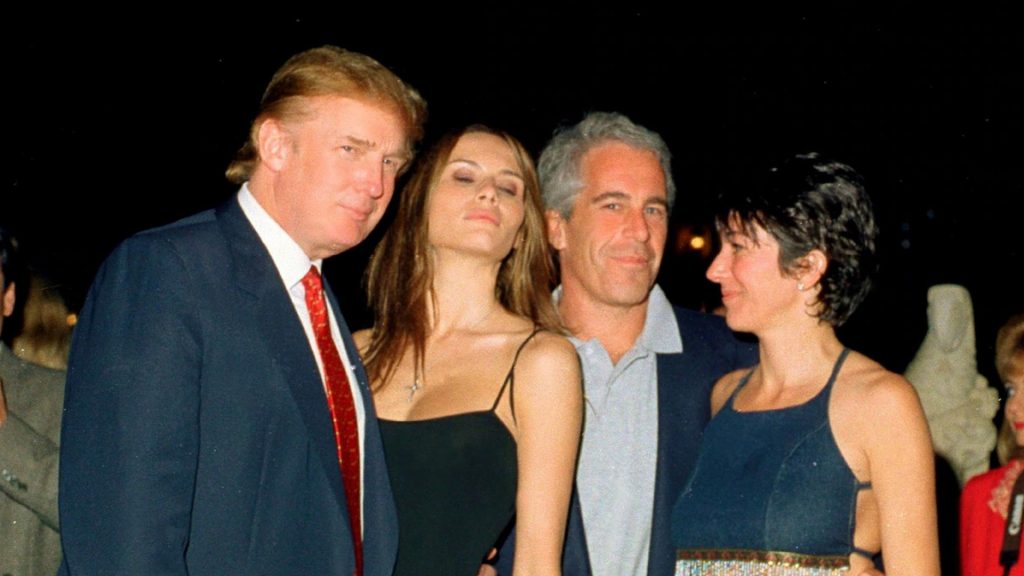
The Epstein saga has flipped the script within the MAGA movement. Having spent years accusing the Democrats of an establishment cover-up, many right-wing influencers are now turning against their idol, President Trump, as he resists calls to release the files. Contributors:Joan Donovan – Director, CriticalNetMehdi Hasan – Editor-in-chief, Zeteo NewsMiles Klee – Culture writer, Rolling StoneDanielle Moodie – Host, The Danielle Moodie Show On our radar: For 21 months, mainstream media outlets have avoided calling Israel’s assault on Gaza a genocide. But this past week has seen a notable shift – prompted not by Palestinian voices, but by an Israeli scholar. Tariq Nafi reports on The New York Times, the breaking of a media taboo, and why, for many, it’s too little, too late. Mass surveillance, a crackdown on protest, and a media unwilling to question power: In Germany, pro-Palestinian voices are being silenced. Nicholas Muirhead reports from Berlin on the mounting assault on free expression. Featuring:Wael Eskander – Berlin-based journalistMartin Gak – Former Deutsche Welle journalistSabine Schiffer – Director, Media Responsibility Institute Adblock test (Why?)
US attorney general paves way for more convicted criminals to own guns
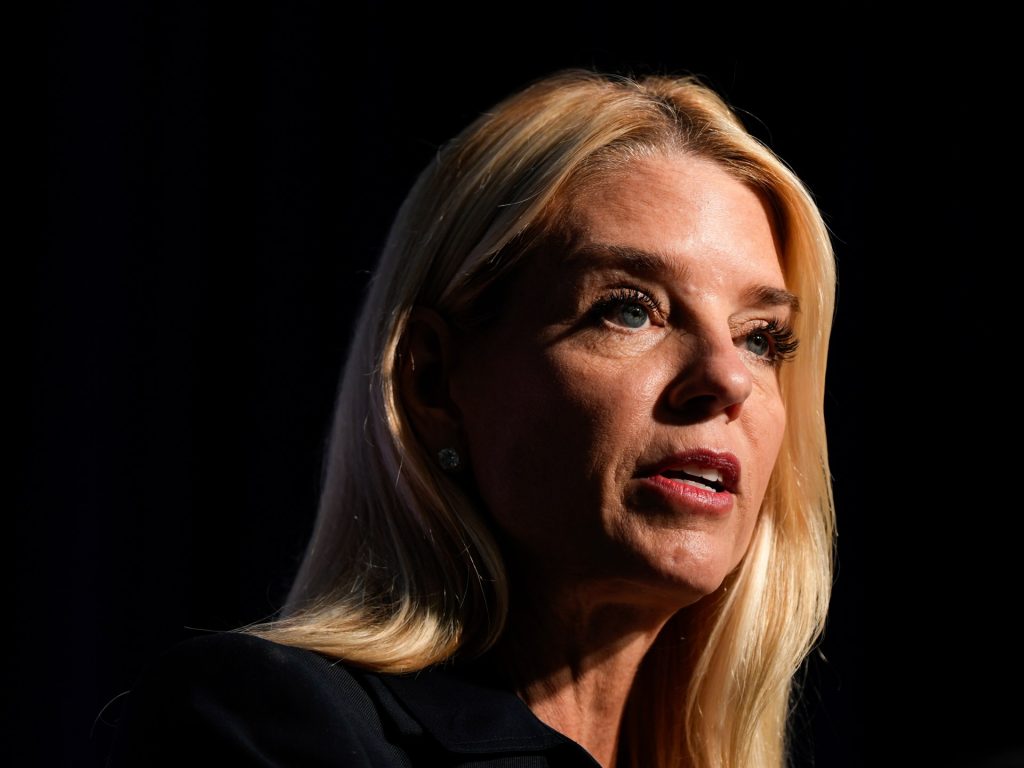
Pam Bondi says the proposed change will give her discretion over who can own firearms, in a move opposed by gun control groups. Washington, DC – United States Attorney General Pam Bondi has begun a process to make it easier for individuals with criminal convictions to own guns. The move on Friday comes amid a wider push by the administration of President Donald Trump to make good on campaign promises to gun rights groups, which criticise restrictions on firearm ownership as violations of the Constitution’s Second Amendment. Trump ordered a review of government gun policies in February. Gun control advocates, meanwhile, have voiced concerns over the administration’s ability to adequately assess which convicted individuals would not pose a public safety risk. In a statement released on Friday, Bondi said individuals with serious criminal convictions have been “disenfranchised from exercising the right to keep and bear arms — a right every bit as constitutionally enshrined as the right to vote, the right to free speech, and the right to free exercise of religion — irrespective of whether they actually pose a threat”. “No longer,” she added. Under the plan, Bondi seeks to return the power to determine which individuals convicted of crimes can own firearms directly to her office. That exemption process has currently been overseen by the Bureau of Alcohol, Tobacco, Firearms and Explosives. However, Congress has, for decades, used its spending approval powers to stem the processing of exemption requests. The Department of Justice said the proposed change “will provide citizens whose firearm rights are currently under legal disability with an avenue to restore those rights, while keeping firearms out of the hands of dangerous criminals and illegal aliens”. Advertisement The US attorney general would have “ultimate discretion to grant relief”, according to the department. It added that, “absent extraordinary circumstances”, certain individuals would be “presumptively ineligible” for the restoration of their gun rights. They include “violent felons, registered sex offenders, and illegal aliens”. The plan was outlined in a “proposed rule” submitted to the Federal Register on Friday. It will undergo a final public comment period before it is adopted. In Friday’s statement, US Pardon Attorney Edward Martin Jr said that his team was already developing a “landing page with a sophisticated, user-friendly platform for Americans petitioning for the return of their gun rights, which will make the process easier for them”. When details of Bondi’s plan initially emerged in March, the gun control group Brady was among those who voiced opposition. “If and when gun rights are restored to an individual, it needs to be through a robust and thoughtful system that minimizes the risk to public safety,” the group’s president, Kris Brown, said in a statement. She added that Trump’s restoration of gun rights to those who were convicted — and later pardoned — for their role in the storming of the US Capitol on January 6, 2021, raised concerns over how the administration would exercise its discretion. “This would be a unilateral system to give gun rights back to those who are dangerous and high risk, and we will all be at greater risk of gun violence,” she said. Adblock test (Why?)
Syria, Israel agree US-brokered ceasefire amid Suwayda clashes, envoy says
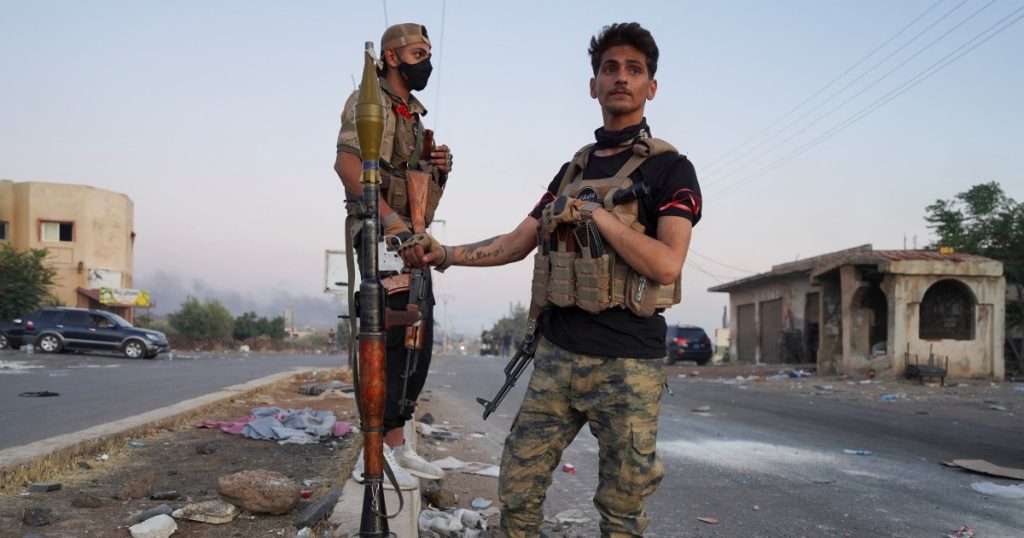
US ambassador says truce was ‘supported’ by the US and ’embraced’ by Turkiye, Jordan and Syria’s neighbours. Syria and Israel have agreed to a ceasefire, US ambassador to Turkiye, Tom Barrack, has announced, drawing an uneasy truce between the neighbours after days of air strikes and sectarian bloodshed in Syria’s southwestern Suwayda region. Barrack said in a post on X early on Saturday that the ceasefire between Syria and Israel was “supported” by Washington and “embraced” by Turkiye, Jordan and Syria’s neighbours. In his post announcing the ceasefire, Barrack said the US called “upon Druze, Bedouins, and Sunnis to put down their weapons and together with other minorities build a new and united Syrian identity in peace and prosperity with its neighbors “. There has been no comment yet from Syrian or Israeli officials. An Israeli official, who declined to be named, told reporters on Friday that in light of the “ongoing instability in southwest Syria”, Israel had agreed to allow the “limited entry of the [Syrian] internal security forces into Suwayda district for the next 48 hours”. On Wednesday, Israel launched heavy air strikes targeting Syria’s Ministry of Defence in the heart of Damascus, and also hit Syrian government forces in the country’s Suwayda region. Israel claims it has launched attacks to protect Syria’s Druze minority in Suwayda, where ethnically charged clashes between Druze and Bedouin armed groups and government forces have reportedly left hundreds dead. Israeli Prime Minister Benjamin Netanyahu has described the Druze, who number about one million in Syria – mostly concentrated in Suwayda – and 150,000 in Israel, as “brothers”. Advertisement A ceasefire agreement mediated by the US, Turkiye and Arab countries was reached between Druze leaders and the Syrian government on Wednesday. Israel, however, launched air strikes on Syria the same day, killing at least three people and wounding 34 others. Following the Israeli attacks, Syrian interim President Ahmed al-Sharaa said in a televised speech early on Thursday that protecting the country’s Druze citizens and their rights was a priority, and though Syria would prefer to avoid a conflict with Israel, it was not afraid of war. Al-Sharaa added that Syria would overcome attempts by Israel to tear the country apart through its aggression. Heavy fighting again flared up between the Druze and Bedouin tribes in Suwayda on Friday, and Damascus has redeployed a dedicated force to restore calm in the Druze-majority governorate. Adblock test (Why?)
Trump sues Wall Street Journal, Rupert Murdoch for $10bn over Epstein story

US Justice Department files a motion in Manhattan federal court to unseal grand jury transcripts in the Epstein cases. United States President Donald Trump has filed a defamation lawsuit against The Wall Street Journal publication and its owners, including media magnate Rupert Murdoch, seeking at least $10bn in damages over the publication of a bombshell report on the president’s friendship with the infamous high-society sex offender Jeffrey Epstein. Trump filed the lawsuit in federal court in the Southern District of Florida on Friday, as he attempts to prevent a growing scandal around the Epstein case from spreading further and threatening to cause him serious political damage. Trump also instructed the US Justice Department to file a motion in Manhattan federal court to unseal grand jury transcripts in the Epstein case and that of his former associate, Ghislaine Maxwell, who in 2021 was convicted of five federal charges related to her role in Epstein’s sexual abuse of underage girls. In the defamation lawsuit, Trump accuses Dow Jones, News Corp, Murdoch and two Wall Street Journal reporters of acting with malicious intent that caused him overwhelming financial and reputational harm. Dow Jones, the parent company of the newspaper, is a division of News Corp. Before filing the case, Trump wrote on Friday morning on his social media platform Truth Social: “I look forward to getting Rupert Murdoch to testify in my lawsuit against him and his ‘pile of garbage’ newspaper, the WSJ. That will be an interesting experience!!!” Representatives of Dow Jones, News Corp and Murdoch have yet to comment on the case. Advertisement Trump once considered Epstein a friend, and the controversy surrounding the now deceased high-profile figure, who took his own life in prison, has prompted conspiracy theories, especially among the far-right supporters of the US president. Trump supporters were enraged last week when US Attorney General Pam Bondi reversed course on the president’s election campaign pledge to release court documents that some believed contained damning revelations about Epstein and his alleged elite clientele. Trump denies penning lewd Epstein birthday message On Thursday, the Wall Street Journal reported that a letter bearing Trump’s signature was sent to Epstein for one of his birthday celebrations. The newspaper said the letter contained a lewd handwritten reference to a woman, with the message: “Happy Birthday – and may every day be another wonderful secret,” and featured the signature “Donald”. Following publication, Trump denied sending the letter to Epstein and lashed out at the newspaper. Epstein died by suicide in a New York jail cell in 2019. Many among Trump’s base of supporters believe the government is covering up Epstein’s ties to the rich and powerful, and some do not believe he died by his own hand. A Justice Department memo released on July 7 concluded that Epstein killed himself and said there was “no incriminating client list” or evidence that Epstein blackmailed prominent people. However, Bondi, the US attorney general, had pledged months ago to release major revelations about Epstein, including “a lot of names” and “a lot of flight logs”, before reversing course. On Friday, Bondi’s Deputy Attorney General Todd Blanche said public interest in the Epstein case had prompted the Justice Department to file a request with the court to unseal transcripts of the case. Trump, who was photographed with Epstein multiple times in social settings in the 1990s and early 2000s, told reporters in 2019 that he ended his relationship with Epstein before his legal troubles became apparent. Adblock test (Why?)
Why is Taiwan training for war with China?
[unable to retrieve full-text content] The increase in Taiwan’s annual drills against invasion from mainland China is crossing paths with civilian life.
Analysis: PKK recalibrates from armed struggle to politics in Turkiye
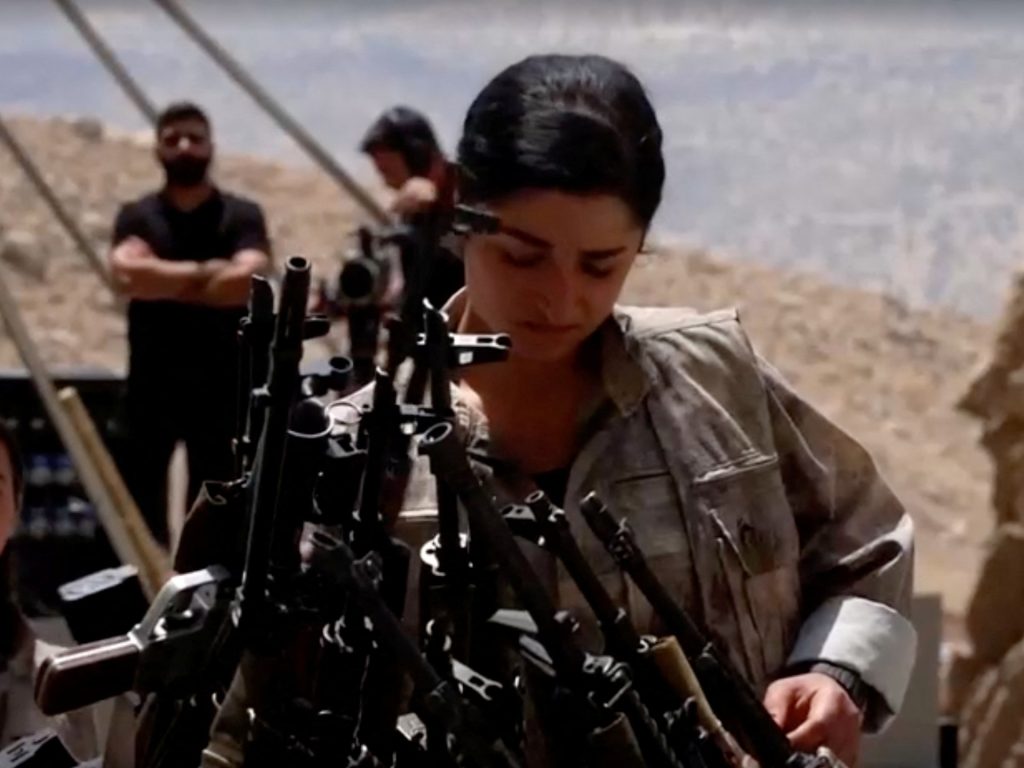
“We voluntarily destroy our weapons … as a step of goodwill and determination,” said senior Kurdistan Workers’ Party (PKK) leader Bese Hozat, speaking in front of a gathering of the group’s fighters. The footage, filmed last Friday in the northern Iraqi city of Sulaimaniyah, then shows the fighters – about 30 of them – placing their weapons inside a cauldron, where they were set alight. The ceremony may have been symbolic, but it capped what might be one of the most consequential periods in Turkiye’s recent political history. It wraps up a carefully planned sequence of gestures and messages, and shows that both sides are not just coordinating symbolically, but are also politically aligned in their intent to move from armed conflict to political dialogue. The choreography of the build-up to the ceremony unfolded with remarkable precision, revealing both political coordination and calculated restraint. Such an alignment would have been impossible without mutual recognition between the PKK and Turkiye of the importance of what was about to happen, as well as the consequences of any failure. On July 7, Turkish President Recep Tayyip Erdogan received his country’s pro-Kurdish DEM Party delegation for the second time in four months. A smiling group photo from the meeting was widely circulated, signalling both the normalisation of dialogue and the symbolic approval of the process at the highest level. Two days later, on July 9, Abdullah Ocalan – the imprisoned PKK leader and founder – appeared in a seven-minute video released by ANF, the PKK’s affiliated media outlet. It marked his first public visual appearance in 26 years and carried a simple but historic message: The time for arms has ended. Advertisement In it, Ocalan emphasised that the movement’s original aim, the recognition of Kurdish identity, had been achieved, and that political engagement must now replace armed resistance. The message was as much to the PKK as it was to the public. Lastly, on July 13, Erdogan addressed the governing AK Party’s retreat, reaffirming his commitment to the disarmament process and announcing that a parliamentary commission would be established to address its legal framework. His message aimed to reassure the broader public, especially his supporters, that the process would strengthen national untiy and benefits all of Turkiye’s citizens, whatever their ethnicity. Message to the Kurdish public Ocalan’s rare video message aimed to reassure his Kurdish supporters that this was not a defeat, but a recalibration: a shift from armed struggle to political engagement. The message was carefully measured and stripped of triumphalism; it sought to redefine the past, rather than glorify it. The dignified tone of the weapons-burning ceremony allowed both the PKK and state narratives to coexist. It did not alienate those who had sacrificed for the PKK’s struggle – activists, politicians in prison or exile, and the families of the disappeared. Instead, it signalled that their voices had been heard. Despite his years of isolation, Ocalan’s words still carry weight. Not only because of his symbolic authority, but because his message reflects what many Kurds now seek: dignity without martyrdom, a voice without violence, and a future beyond armed struggle. Public support for disarmament is growing, even among those long sceptical of the state’s intent. Recent surveys show that more than 90 percent of DEM voters, as well as those who identify as Kurdish or Zaza (a Kurdish-adjacent minority group) in Turkiye, support the process. Belief that the PKK will fully disarm is also significantly higher than the national average. The PKK’s decision to disarm is not a retreat but a recalibration. Since its founding in 1978, the group has waged a protracted armed struggle against the Turkish state, demanding autonomy and rights for Kurds. But after decades of rebellion, the regional landscape has changed. In northern Iraq and Syria, the PKK’s operational space has altered. While the Syrian Democratic Forces (SDF), a key PKK-linked actor, remains active in northeastern Syria, its future hinges on shifting US commitments and delicate understandings with the new government in Damascus, an ally of Turkiye. Advertisement At the same time, Iran’s weakening regional influence, sustained Turkish military pressure, and a quiet but growing preference among Western actors for a stable Turkiye have all contributed to reshaping the group’s strategic calculus. Crucially, this recalibration does not conflict with the United States and Israel’s core interests in curbing Iranian influence and maintaining a manageable status quo in Syria. Against this backdrop, a disarmed and politically engaged Kurdish movement in Turkiye is not an isolated anomaly. In this context, the PKK has opted to step off the battlefield and into the political arena. As Ocalan expressed in his July 9 message, “I believe in the strength of peace, not the force of arms.” The weapons-burning ceremony is not the end of the disarmament process. A Turkish parliamentary commission is expected to define the conditions for the reintegration of PKK fighters into civilian and political life in Turkiye, while a verification mechanism involving the Turkish Armed Forces and intelligence agency will monitor disarmament and issue a report to guide further steps. Hozat, the PKK senior leader, framed the ceremony as a political milestone, and reaffirmed the group’s ambition to enter civilian politics, expressing an aim to become “pioneers of democratic politics in Amed [Diyarbakir], Ankara, and Istanbul” – a deliberate reference to key centres of Kurdish representation in Turkiye and national political power. Yet this transition hinges on comprehensive legal reforms and credible guarantees that are both socially and politically viable, and civil society groups and humanitarian organisations in Turkiye are likely to play an active role in the forthcoming stages of full disarmament. Turkish political support In Turkiye, there is broad buy-in for the peace process with the PKK from across the political spectrum. This is largely because the process benefits nearly all political actors by reducing the securitised political climate, easing judicial pressure, and offering a chance to reset deeply polarised governance. With “terrorism” charges having been used expansively in recent years, even members of the opposition
Felix Baumgartner death: Witnesses heard loud boom before crash

Felix Baumgartner’s fatal paragliding crash was preceded by large boom as it spun to the ground, according to witnesses. Beachgoers knew something was wrong when they heard a loud boom ring out as a paraglider spun out of control, before killing its only occupant, extreme athlete Felix Baumgartner, when it crashed next to a swimming pool near the Adriatic Sea. A 30-year-old mother watched the deadly descent unfold Thursday afternoon from nearby with her two young children, who were entranced by the constant traffic of paragliders above the beach town of Porto Sant’Elipido in central Italy’s Marche region. “Everything was normal, then it started to spin like a top,’’ Mirella Ivanov said on Friday. “It went down and we heard a roar. In fact, I turned around because I thought it crashed on the rocks. Then I saw two lifeguards running, people who were running toward” the crash site. When she saw people trying to revive the occupant, she hustled her two children away. The city’s mayor confirmed the death of 56-year-old Baumgartner, who was renowned as the first skydiver to fall faster than the speed of sound. The cause of the paragliding accident was under investigation. Police did not return calls asking for comment. “It is a destiny that is very hard to comprehend for a man who has broken all kinds of records, who has been an icon of flight, and who travelled through space,” Mayor Massimiliano Ciarpella told The Associated Press. Ciarpella said that Baumgartner had been in the area on vacation, and that investigators believed he may have fallen ill during the fatal flight. Baumgartner’s social media feed features videos of him in recent days flying on a motorised paraglider – known as paramotoring – above seaside towns, and taking off from a nearby airfield surrounded by cornfields. Workers stand near the swimming pool of the ‘Le Mimose’ resort, where skydiver Felix Baumgartner’s paraglider crashed, killing him and injuring a hotel employee on the ground, in Porto Sant’Elpidio, Italy [Guglielmo Mangiapane/Reuters] The Clube de Sole Le Mimose beachside resort where the crash occurred said in a statement that an employee who was “slightly injured” in the accident was in good condition. No guests were injured, and the pool has been reopened. Advertisement In 2012, Baumgartner, known as “Fearless Felix,” became the first human to break the sound barrier with only his body. He wore a pressurised suit and jumped from a capsule hoisted more than 24 miles (39 kilometres) above Earth by a giant helium balloon over New Mexico. The Austrian, who was part of the Red Bull Stratos team, topped out at 843.6 mph (1,357.6km/h) – the equivalent of 1.25 times the speed of sound – during a nine-minute descent. At one point, he went into a potentially dangerous flat spin while still supersonic, spinning for 13 seconds, his crew later said. In 2012, millions watched YouTube’s livestream as Baumgartner coolly flashed a thumbs-up when he came out of the capsule high above Earth and then activated his parachute as he neared the ground, lifting his arms in victory after he landed. Baumgartner’s altitude record stood for two years until Google executive Alan Eustace set new marks for the highest free-fall jump and greatest free-fall distance. Baumgartner, a former Austrian military parachutist, made thousands of jumps from planes, bridges, skyscrapers and famed landmarks, including the Christ the Redeemer statue in Brazil. In 2003, he flew across the English Channel in a carbon fibre wing after being dropped from a plane. In recent years, he performed with The Flying Bulls, an aviation team owned and operated by Red Bull, as a helicopter stunt pilot in shows across Europe. Red Bull paid Baumgartner tribute in a post Friday, calling him “precise, demanding and critical. With others, but above all toward yourself.” The statement underlined the research and courage with which Baumgartner confronted “the greatest challenges.” “No detail was too small, no risk too great, because you were capable of calculating it,’’ Red Bull said. Adblock test (Why?)
Why do US prosecutors want a one-day sentence for Breonna Taylor shooting?
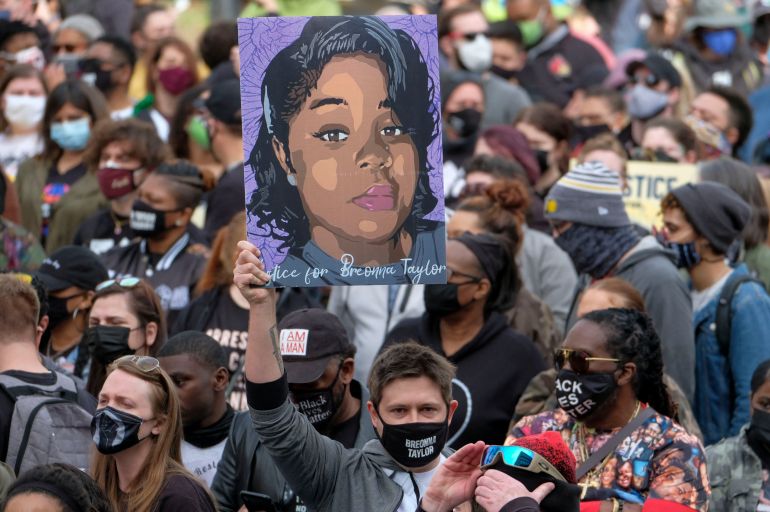
The United States Department of Justice (DOJ) is seeking a shortened prison sentence of just one day for an ex-police officer convicted of using excessive force during a raid in Louisville, Kentucky that led to the death of Breonna Taylor, an African-American medical worker, in March 2020. Brett Hankison was convicted in November last year of blindly firing several shots during a failed drug raid, which resulted in Taylor’s death. Although his shots were not the ones which hit Taylor, prosecutors argued his actions were a violation of Taylor’s rights and others present at the scene. After it spent several years pursuing a conviction under the previous administration, the DOJ’s recommendation on Thursday represents a 180-degree turn, which has caused anger in the Black community. Hankison’s sentencing will take place on Monday, when a federal judge will decide his term at a hearing. Here’s what we know about the case: A protester brandishes a portrait of Breonna Taylor during a rally in remembrance on the first anniversary of her death in Louisville, Kentucky, on March 13, 2021 [Jeff Dean/AFP] What happened to Breonna Taylor? Taylor, an emergency medical technician, was shot dead during a raid by police from the Louisville Metro Police Department in her apartment in the early hours of March 13, 2020. Seven plain-clothed officers executed a “no-knock” search warrant. Three officers broke down the door to her two-bedroom apartment, where Taylor was in bed with her boyfriend, Kenneth Walker. Walker, who possessed a licensed firearm, fired one shot. He later told police he thought the men were intruders. One officer, Jonathan Mattingly, was struck and wounded in the thigh. Mattingly and his colleague, Miles Cosgrove, directly returned fire into the apartment. Cosgrove delivered the fatal shot that killed Taylor. She was shot six times and died in the hallway. Advertisement Hankison ran to the side of the building and fired 10 shots into the apartment through a window and sliding door covered with blinds. Some of the bullets hit an occupied apartment adjacent to Taylor’s. A report by the Federal Bureau of Investigation (FBI) determined that the police fired 32 shots in total. Jamarcus Glover, Taylor’s ex-boyfriend, had been the original target of the search, as authorities believed he hid narcotics at Taylor’s apartment. He was arrested at a separate location in Louisville that night, before Taylor’s killing. It is unclear if the same team of officers arrested Glover. Taylor’s murder, and an initial absence of charges against the police officers involved, triggered mass, months-long protests across the country. No officers faced direct charges over Taylor’s death. Only Hankison faced charges for firing blindly. Taylor’s case and the killing of George Floyd in May 2020, fuelled a national reckoning on racism and police brutality as part of the Black Lives Matter movement. Taylor’s family received a $12m settlement from the city of Louisville in September 2020. The city also banned no-knock raids with the introduction of the “Breonna Law”. Former Louisville police officer Brett Hankison is questioned by his defence lawyer, March 2, 2022, in Louisville [Timothy D Easley/AP Photo] Why are prosecutors recommending a one-day sentence? Prosecutors under the Trump administration are recommending that Hankison serve no further jail term for the case, and that he should instead be sentenced to time already served plus three years of supervised probation. Hankison served one day in jail after he was arrested in 2023 for his first court appearance. At the time, federal prosecutors under the Biden administration sought a conviction against him that could have amounted to a maximum life sentence. In November 2024, a federal jury found Hankison guilty of using excessive force and depriving Taylor of her civil rights. However, in a memo on Thursday, the DOJ said there “is no need for a prison sentence to protect the public” from Hankison. The memo added that although Hankison’s response in the “fraught circumstances was unreasonable” in hindsight, “that unreasonable response did not kill or wound Breonna Taylor, her boyfriend, her neighbours, defendant’s fellow officers, or anyone else”. What happened to the other officers? Hankison is the only one of the three officers at the scene to face charges. He was fired from the police force in June 2020, and Cosgrove was fired in 2021, after local investigations determined they had violated standard practice by shooting blindly. Mattingly retired in April 2021. Advertisement Another ex-officer who was not at the scene pleaded guilty to federal charges of violating Taylor’s civil rights by falsely stating on the search warrant that Taylor received packages for Glover. Two other former officers pleaded not guilty to similar charges. If the court heeds the DOJ’s advice, none of the officers involved in the case would have faced jail time. It is not certain that the court will agree to the recommendation. How have Taylor’s family responded? Ben Crump, the civil rights lawyer who helped Taylor’s family secure the $12m settlement against Louisville, said in a statement on the social media site X that the DOJ’s recommendation was an “insult to the life of Breonna Taylor and a blatant betrayal of the jury’s decision”. “This sets a dangerous precedent,” Crump wrote on Thursday. “When a police officer is found guilty of violating someone’s constitutional rights, there must be real accountability and justice. Recommending just one day in prison sends the unmistakable message that white officers can violate the civil rights of Black Americans with near-total impunity.” What was the verdict in Hankison’s trial? The DOJ, under a different leadership, charged Hankison in 2022 on one count of violating the civil rights of Taylor and her boyfriend, Walker, as well as Taylor’s neighbours, when he blindly fired into her home. The state of Kentucky arraigned Hankison on similar charges but cleared him of wrongdoing in March 2022. However, after four days of deliberation, a federal jury declared a mistrial in November 2023, as jurors were unable to reach a joint decision. Witnesses gave conflicting testimonies, including about whether the police officers had
Man Utd close on Mbeumo deal with medical imminent
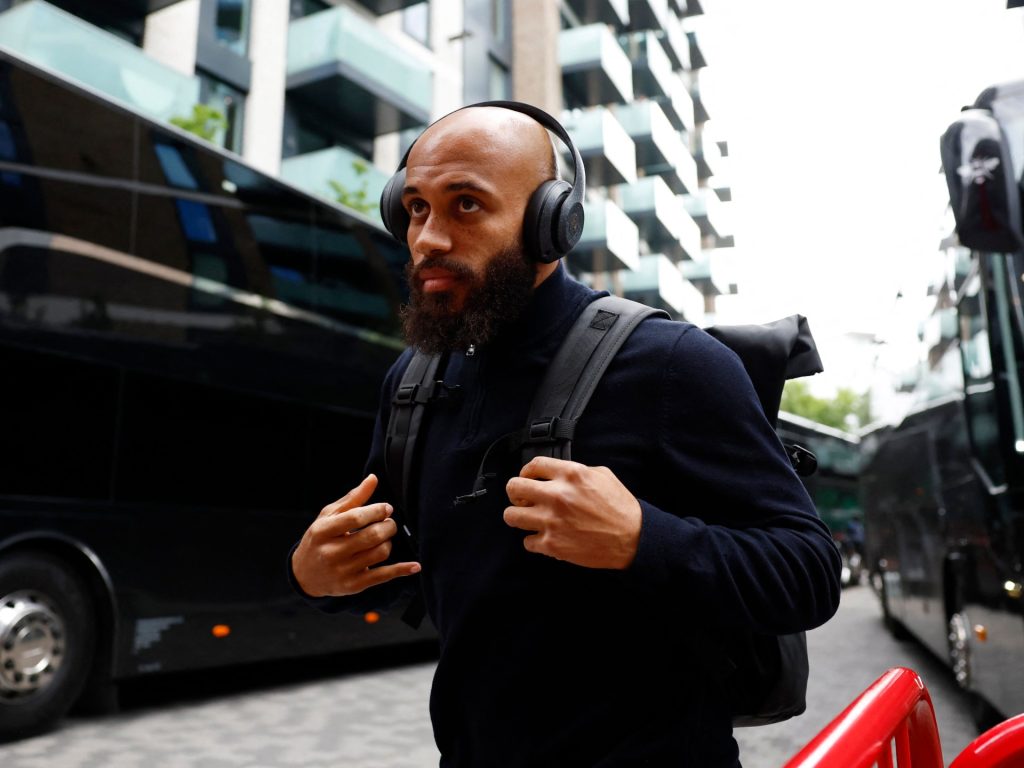
Manchester United are on the verge of signing Bryan Mbeumo from Brentford with a medical understood to be imminent. Manchester United have reportedly agreed to sign Cameroon winger Bryan Mbeumo from Brentford in a deal worth an initial $87m as Ruben Amorim steps up his overhaul of the team’s misfiring attack. Mbeumo attracted Amorim’s attention with 20 goals in 38 Premier League games for Brentford last season. Tottenham, now managed by former Brentford boss Thomas Frank, were also chasing the 25-year-old before United’s improved offer sealed the deal after their two previous bids were rebuffed. United will pay an additional 6 million pounds ($8.07m) in potential add-ons to Brentford. Mbeumo is due to undergo a medical in time to travel to the United States on Tuesday as Amorim’s men start their pre-season tour. He is set to become United’s third signing since the end of last season, joining Wolves forward Matheus Cunha and teenage Paraguayan defender Diego Leon at Old Trafford. Amorim has been determined to revamp United’s forward options after a woeful campaign. They suffered a toothless 1-0 defeat against Tottenham in the Europa League final and a 15th-place finish in the top flight that ranked as their lowest since 1973-74. Rasmus Hojlund and Joshua Zirkzee struggled as Amorim’s main strikers last term. Amorim has reportedly told Alejandro Garnacho to look for a new club, while Marcus Rashford and Jadon Sancho are expected to leave following their loan spells at Aston Villa and Chelsea, respectively. Mbeumo will be Amorim’s latest new recruit in his bid to revitalise moribund United. Having already paid 62.5 million pounds ($84.03m) for Cunha, United’s spending spree comes despite their failure to qualify for the Champions League costing the club a minimum of 70 million pounds ($94.11m). Advertisement The versatile Mbeumo is able to operate in a variety of roles on the flanks or in central attacking areas. His pace, creativity and clinical finishing should be a significant boost to United. Mbeumo blossomed in six years at Brentford, scoring 70 goals and providing 51 assists in 242 appearances in all competitions following his move from French club Troyes in 2019. He helped the Bees win promotion to the Premier League in 2021 and was instrumental in their impressive 10th-place finish in 2024-25. Adblock test (Why?)

